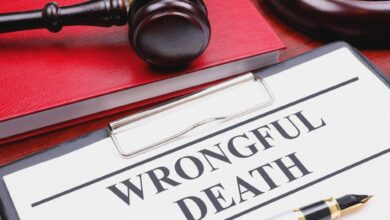How Does a Plaintiff Prove Wrongful Death in Texas?

Losing a loved one is an emotionally devastating experience, and when the death is the result of someone else’s negligence or misconduct, it may be considered a wrongful death. In Texas, as in many other jurisdictions, there are specific legal elements and procedures that a plaintiff must navigate to successfully prove wrongful death and seek compensation. Let us understand the key aspects of Proving Wrongful Death in Texas, offering insights into the legal framework, necessary evidence, and steps involved in pursuing justice.
Read More: Who Can Claim Wrongful Death Compensation On A Victim’s Behalf
Role of Comparative Fault in Wrongful Death Cases
In Texas, the legal principle of comparative fault can significantly impact the outcome of a wrongful death case. Understanding how this concept operates is crucial for both plaintiffs and defendants involved in such claims. Texas follows a modified comparative fault system, meaning that a plaintiff’s recovery may be reduced in proportion to their percentage of fault but is barred entirely if their fault exceeds 50%.
Understanding Wrongful Death Claims in Texas
In Texas, a wrongful death claim arises when an individual’s death is caused by the negligent, reckless, or intentional actions of another party. To initiate a wrongful death lawsuit, the plaintiff must establish several essential elements:
Breach of Duty
The first crucial element in a wrongful death case is proving that the defendant owed a duty of care to the deceased. This duty could vary depending on the circumstances, such as a doctor’s duty to provide competent medical care or a driver’s duty to operate a vehicle safely. Establishing a breach of this duty is essential, demonstrating that the defendant failed to uphold the standard of care expected in the given situation.
Causation
Once a breach of duty is established, the plaintiff must prove that this breach directly caused the death. Establishing a clear link between the defendant’s actions and the fatal outcome is crucial. This involves demonstrating that the death would not have occurred “but for” the defendant’s negligence or wrongful conduct. Expert testimony may be utilised to provide insights into causation, especially in complex cases such as medical malpractice or product liability.
Damages
Wrongful death cases also require proof of damages suffered by the surviving family members or beneficiaries. This includes both economic and non-economic damages, such as medical expenses, funeral costs, loss of financial support, loss of companionship, and emotional distress. Calculating these damages accurately is vital to ensuring fair compensation for the loss experienced by the surviving family.
Gathering Evidence for a Strong Case
Documentary Evidence
Collecting relevant documents is crucial in proving a wrongful death case. This may include medical records, accident reports, witness statements, and any other documents that provide a clear picture of the events leading to the death. Documentary evidence helps establish the defendant’s negligence, the extent of the damages, and the overall impact on the surviving family.
Expert Testimony
In complex cases, expert witnesses can play a pivotal role in establishing liability and causation. For instance, a medical expert may testify about the standard of care in a malpractice case, while an accident reconstruction expert can provide insights into the dynamics of a fatal car accident. These professionals add credibility to the plaintiff’s case and help the court understand the technical aspects involved.
Eyewitness Accounts
Eyewitness testimony can provide valuable perspectives on the events leading to the wrongful death. Gathering statements from individuals who witnessed the incident or have relevant information can strengthen the plaintiff’s case. Eyewitness accounts help corroborate other evidence and provide a more comprehensive understanding of the circumstances surrounding the fatal incident.
Navigating the Legal Process
Statute of Limitations
It is crucial for plaintiffs in Texas to be aware of the statute of limitations for wrongful death claims. In Texas, the general statute of limitations is two years from the date of the deceased person’s death. Failing to file within this timeframe may result in the loss of the right to pursue a wrongful death claim.
Selecting the Right Attorney
Given the complexity of wrongful death cases, it is essential to choose an experienced attorney with expertise in Texas wrongful death law. An attorney can guide the plaintiff through the legal process, help gather the necessary evidence, and navigate any challenges that may arise during the litigation.
Conclusion
Proving wrongful death in Texas requires a comprehensive understanding of the legal elements involved, meticulous gathering of evidence, and adept navigation of the legal process. By establishing a breach of duty, demonstrating causation, and presenting damages, plaintiffs can build a strong case to seek justice for their loved one’s untimely death.











